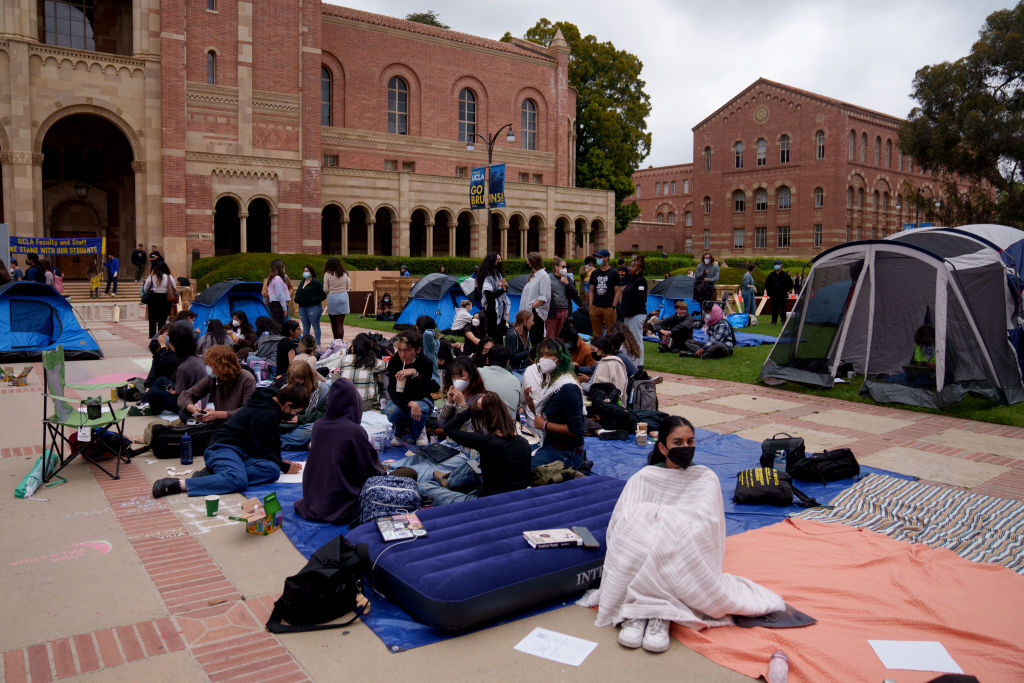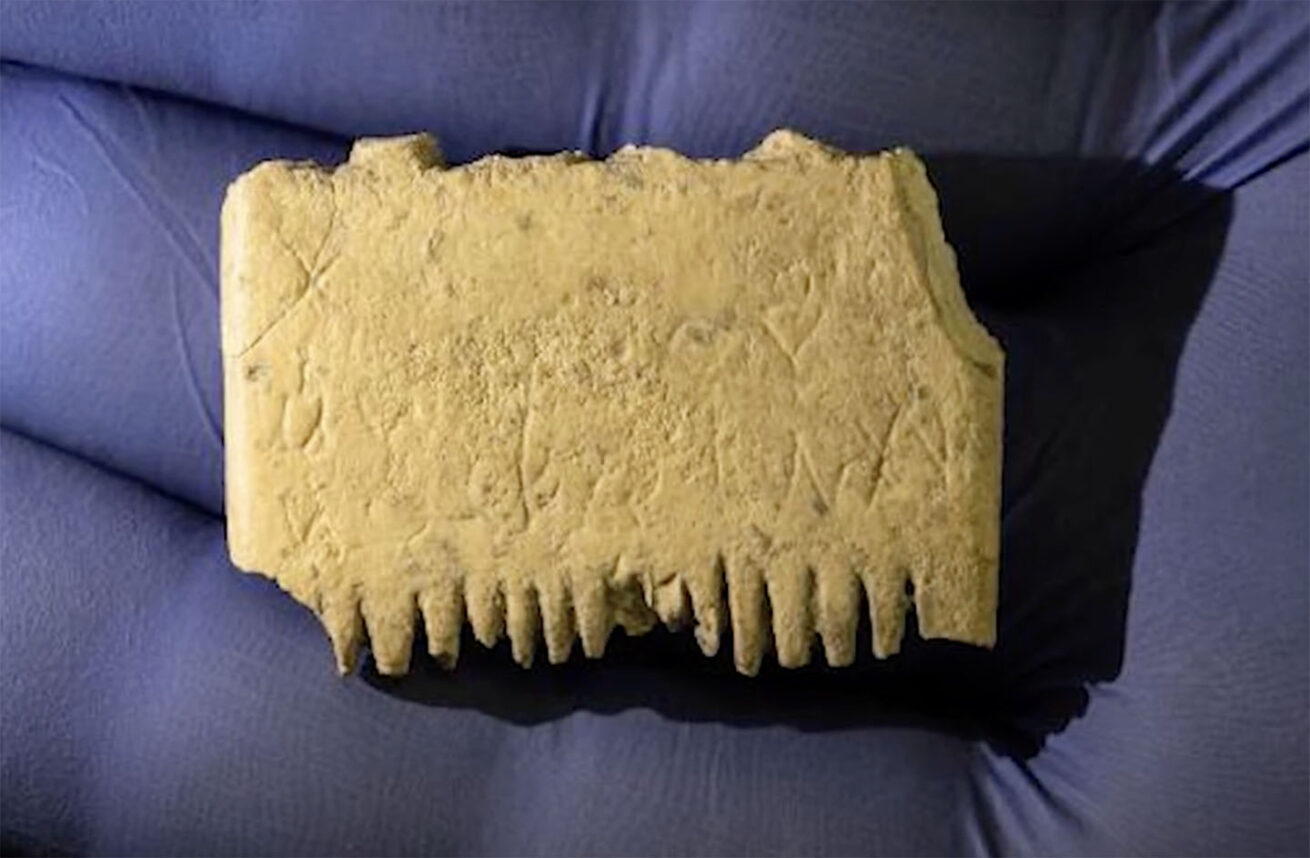 Mark Newman/Getty Images
Mark Newman/Getty Images Crowding together porcupines
are pricked by one another’s quills,
their potential as landmines
thus prevented. No porc kills
another with his quills, since all
maintain sufficient social distance
to stay alive, their death’s close call
provided by it great resistance.
Distance that’s been labeled “middle”
preserved a lot of lives, like mine
in the pandemic. More than a little
I was like a porcupine,
middle-distanced Schopenhauer,
preventing danger when my breath
was poisonous, less like a flower
than like an angel causing death.
Like Judah meeting Tamar I’m
now favoring “0nly connect,”
E. M. Forster paradigm,
Morally not more, correct
than “Only separate,” a rule
imposed in Genesis’s first chapter
five times, a useful social tool
that sometimes may indeed be apter.
It is the reason we perform
a ritual. Sabbath is erased
with havdallah, ritual reform,
“Connect!” by “Separate!” replaced,
and from the Sabbath disconnected —
ritual its illumination
with a candle we’ve selected
celebrating separation.,
like, separated from his roots,
Wittgenstein, uprooted dude
whose philosophical pursuits
did not Jewish thoughts include,
distanced as I was from quills,
immune to spikes like porcupines’
in covid viruses from ills,
though with less wit that Wittgenstein’s,
though always very glad to amble
in the world of Abrabram,
as in the Threshing Floor called Bramble
where peace was the unprickly program.
Wikipedia explains the etymology of “porcupine” thus:
The word “porcupine” comes from the Latin porcus pig + spina spine, quill, via Italian (Italian “porcospino“, thorn-pig)….
In “The Space Between: Vayigash,” Jonathan Sacks writes:
What do porcupines do in winter?” asked Schopenhauer. “How can they stay warm?” If they come too close to one another, they will injure each other. If they stay too far apart, they will freeze. Life, for porcupines, is a delicate balance between closeness and distance. It is hard to get it right, and dangerous to get it wrong. And so it is for us.
That is the force of the word that gives our parsha its name: Vayigash. “And he came close.”
Then Judah came close to him and said: “Pardon your servant, my lord, let me speak a word to my lord. Do not be angry with your servant, though you are equal to Pharaoh himself” (Gen. 44:18).
For perhaps the first time in his life, Judah came close to his brother Joseph. The irony is, of course, that he did not know it was Joseph. But that one act of coming close melted all of Joseph’s reserve, all of his defenses, and as if unable to stop himself, he finally disclosed his identity.
Reviewing On Wittgenstein: A Life by Brian McGuinness in “The philosophical porcupine,” The New Criterion, December 1988, Roger Kimball writes:
The essential thing to grasp about Wittgenstein’s character is his peculiar combination of tenacity and touchiness. Both are evident in all aspects of his life: intellectual, social, emotional. Craving affection, he nonetheless could not bear prolonged intimacy. This is the point of his fondness for Schopenhauer’s parable of the porcupines, to which Mr. McGuinness frequently adverts: crowding together for warmth on a winter’s day, a group of porcupines are pricked by one another’s quills; so they move back and forth until they find a middle distance—a place midway between isolation and intimacy—that they can comfortably endure.
Havdallah is the ritual with which we end the Sabbath, lighting a candle and saying:
בָּרוּךְ אַתָּה יי אֱלֹהֵינוּ מֶלֶךְ הָעוֹלָם, הַמַּבְדִּיל בֵּין קֹדֶשׁ לְחוֹל, בֵּין אוֹר לְחֹשֶׁךְ, בֵּין יִשְׂרָאֵל לָעַמִּים, בֵּין יוֹם הַשְּׁבִיעִי לְשֵׁשֶׁת יְמֵי הַמַּעֲשֶׂה, בָּרוּךְ אַתָּה יי, הַמַּבְדִּיל בֵּין קֹדֶשׁ לְחוֹל:
Blessed are You, Lord our God, King of the universe, who creates the light of the fire. Blessed are You, Lord our God, King of the universe, who distinguishes between the holy and the profane, between light and darkness, between Israel and the nations, between the seventh day and the six working days. Blessed are You, O Lord, who distinguishes between the holy and the profane.
Jonathan Sacks in his Commentary to Vayigash, writes:
Then Joseph said to his brothers, “I am Joseph! Is my father still alive?” (Gen. 45:3)…
…How then do we make and sustain relationships, if the balance is so fine and it is so easy to get it wrong? The Torah’s answer – already there in the first chapter of the Torah – is: first separate, then join. The verb lehavdil, “to separate,” appears five times in the first chapter of Bereishit. God separates light from darkness, the upper and lower waters, sea and dry land. Separation is at the heart of Jewish law – between holy and profane, pure and impure, permitted and forbidden.
In Judaism kadosh, holy, means separation. To sanctify is to separate. Why? Because when we separate, we create order. We defeat chaos. We give everything and everyone their space. I am I and not you. You are you and not I. Once we respect our difference and distance, then we can join without doing damage to one another.
Describing the mourning that occurred during the funeral of Jacob Gen 50:11 states:
יא וַיַּרְא יוֹשֵׁב הָאָרֶץ הַכְּנַעֲנִי אֶת-הָאֵבֶל, בְּגֹרֶן הָאָטָד, וַיֹּאמְרוּ, אֵבֶל-כָּבֵד זֶה לְמִצְרָיִם; עַל-כֵּן קָרָא שְׁמָהּ, אָבֵל מִצְרַיִם, אֲשֶׁר, בְּעֵבֶר הַיַּרְדֵּן. 11 And when the inhabitants of the land, the Canaanites, saw the mourning in the Threshing Floor of Atad, Bramble, they said: ‘This is a grievous mourning to the Egyptians.’ Wherefore the name of it was called Abel-mizraim, which is beyond the Jordan.
In “Where Was Jacob Buried?” (thetorah.com), David Ben-Gad Hacohen explains the problematic name of the place where Gen. 50:11 tells us people mourned for Jacob when his body was being transported from Egypt, to be buried in Canaan, “ בְּגֹ֙רֶן֙ הָֽאָטָ֔ד, in the Goren Ha-Atad, the Threshing Floor of the Atad, Bramble.” The Jerusalem Talmud suggests in JSotah 1:10 that the prickly bramble to which the name of the Threshing Floor alludes implies that it was a place where the mourners, who included the sons of Esau, Ishmael and Keturah—Jacob’s cousins—removed their (pointy) crowns.
The Babylonian Talmud explains in BSotah 13a:
Does a bramble have a threshing floor?! Rabbi Samuel bar Nachman said: “We have looked throughout scripture and we did not find a place called Atad.” So what is Atad? This refers to the Canaanites who were fit to have been crushed like a bramble. What merit did they have that saved them? The merit of (Gen 50:11) “The Canaanite inhabitants of the land saw the mourning at Goren ha-Atad…”
David Ben-Gad Hacohen points out the Babylonian Talmud’s statement implies that the prickly bramble alludes to the fact when the sons of Esau, Ishmael, and Keturah—Jacob’s cousins—came to the funeral they removed their (pointy) crowns Sotah 13a states:
Does a bramble really get a threshing floor? Rabbi Abahu said: “This teaches that they surrounded Jacob’s casket with crowns, like any given threshing floor may be surrounded by brambles” — for the sons of Esau, the sons of Ishmael, and the sons of Keturah all came.
It was taught: All of them originally came to make war, but when they saw Joseph’s crown hanging upon Jacob’s casket, they took off their crowns and hung them on Jacob’s casket.
My poem suggests that the name of the place, “Threshing Floor of the Bramble,” implies that the mourners behaved as porcupines do when they want to connect with other porcupines rather than being separated from one another by their sharp quills, It surely was not just a place where all Abrahamic descendants mourned the death of Jacob, whose name was also Israel. Far more importantly it also was a place where all Abrahamic former enemies of Israel made peace with Israel by connecting closely with this family while they mourned together.
Gershon Hepner is a poet who has written over 25,000 poems on subjects ranging from music to literature, politics to Torah. He grew up in England and moved to Los Angeles in 1976. Using his varied interests and experiences, he has authored dozens of papers in medical and academic journals, and authored “Legal Friction: Law, Narrative, and Identity Politics in Biblical Israel.” He can be reached at gershonhepner@gmail.com.























 More news and opinions than at a Shabbat dinner, right in your inbox.
More news and opinions than at a Shabbat dinner, right in your inbox.